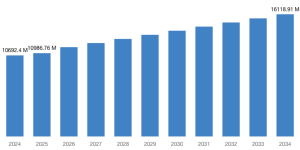
A significant insider buy by Drue Matheny, Executive Vice President at Dillard’s DDS, was executed on February 3, and reported in the recent SEC filing.
What Happened: In a significant move reported in a Form 4 filing with the U.S. Securities and Exchange Commission on Monday, Matheny purchased 199 shares of Dillard’s, demonstrating confidence in the company’s growth potential. The total value of the transaction stands at $93,366.
During Tuesday’s morning session, Dillard’s shares down by 0.62%, currently priced at $458.53.
Discovering Dillard’s: A Closer Look
Dillard’s Inc is an American fashion apparel, cosmetics, and home furnishings retailer. Its stores offer a large variety of merchandise and feature products from both national and exclusive brand sources. The company also operates a general contracting construction company, CDI Contractors. CDI Contractors’ business includes constructing and remodelling stores for Dillards. The merchandise selections include exclusive brand merchandise such as Antonio Melani, Gianni Bini, Daniel Cremieux, Roundtree & Yorke, and private-label merchandise, among others. The company operates in two business segments; Retail Operations and Construction. The Retail Operations segment generates maximum revenue for the company.
Dillard’s: A Financial Overview
Revenue Challenges: Dillard’s’s revenue growth over 3 months faced difficulties. As of 31 October, 2024, the company experienced a decline of approximately -3.53%. This indicates a decrease in top-line earnings. As compared to competitors, the company encountered difficulties, with a growth rate lower than the average among peers in the Consumer Discretionary sector.
Profitability Metrics: Unlocking Value
-
Gross Margin: The company shows a low gross margin of 43.54%, indicating concerns regarding cost management and overall profitability relative to its industry counterparts.
-
Earnings per Share (EPS): The company excels with an EPS that surpasses the industry average. With a current EPS of 7.73, Dillard’s showcases strong earnings per share.
Debt Management: Dillard’s’s debt-to-equity ratio is below the industry average. With a ratio of 0.28, the company relies less on debt financing, maintaining a healthier balance between debt and equity, which can be viewed positively by investors.
Valuation Analysis:
-
Price to Earnings (P/E) Ratio: With a lower-than-average P/E ratio of 11.9, the stock indicates an attractive valuation, potentially presenting a buying opportunity.
-
Price to Sales (P/S) Ratio: With a lower-than-average P/S ratio of 1.12, the stock presents an attractive valuation, potentially signaling a buying opportunity for investors interested in sales performance.
-
EV/EBITDA Analysis (Enterprise Value to its Earnings Before Interest, Taxes, Depreciation & Amortization): With a lower-than-industry-average EV/EBITDA ratio of 6.79, Dillard’s presents a potential value opportunity, as investors are paying less for each unit of EBITDA.
Market Capitalization Analysis: Positioned below industry benchmarks, the company’s market capitalization faces constraints in size. This could be influenced by factors such as growth expectations or operational capacity.
Now trade stocks online commission free with Charles Schwab, a trusted and complete investment firm.
Navigating the Impact of Insider Transactions on Investments
Insider transactions are not the sole determinant of investment choices, but they are a factor worth considering.
Within the legal framework, an “insider” is defined as any officer, director, or beneficial owner holding more than ten percent of a company’s equity securities as per Section 12 of the Securities Exchange Act of 1934. This includes executives in the c-suite and major hedge funds. These insiders are mandated to disclose their transactions through a Form 4 filing, to be submitted within two business days of the transaction.
The initiation of a new purchase by a company insider serves as a strong indication that they expect the stock to rise.
However, insider sells may not always signal a bearish view and can be influenced by various factors.
A Deep Dive into Insider Transaction Codes
Examining transactions, investors often concentrate on those unfolding in the open market, meticulously detailed in Table I of the Form 4 filing. A P in Box 3 denotes a purchase, while S signifies a sale. Transaction code C indicates the conversion of an option, and transaction code A denotes a grant, award, or other acquisition of securities from the company.
Check Out The Full List Of Dillard’s’s Insider Trades.
Insider Buying Alert: Profit from C-Suite Moves
Benzinga Edge reveals every insider trade in real-time. Don’t miss the next big stock move driven by insider confidence. Unlock this ultimate sentiment indicator now. Click here for access.
This article was generated by Benzinga’s automated content engine and reviewed by an editor.
Market News and Data brought to you by Benzinga APIs
© 2025 Benzinga.com. Benzinga does not provide investment advice. All rights reserved.

